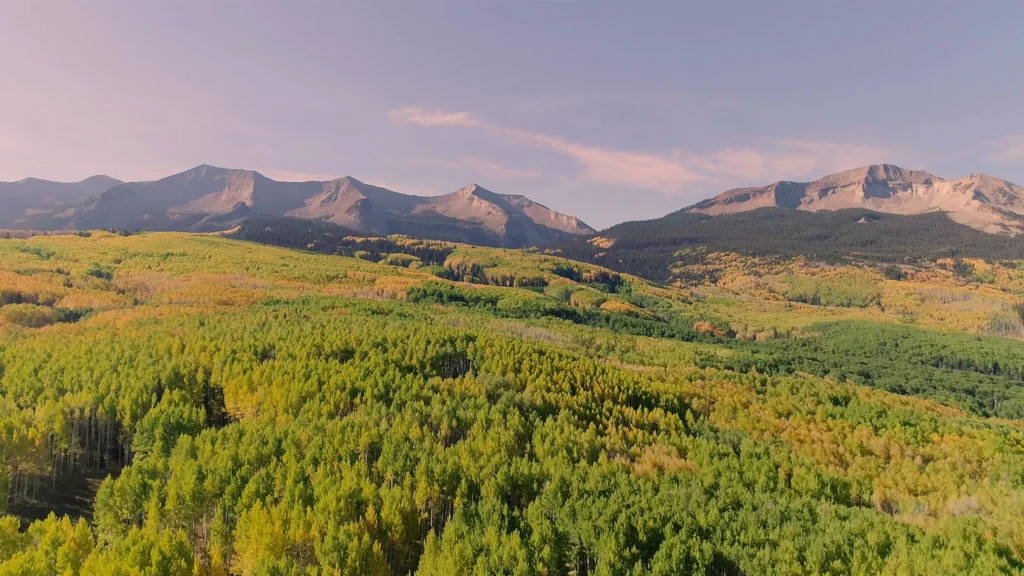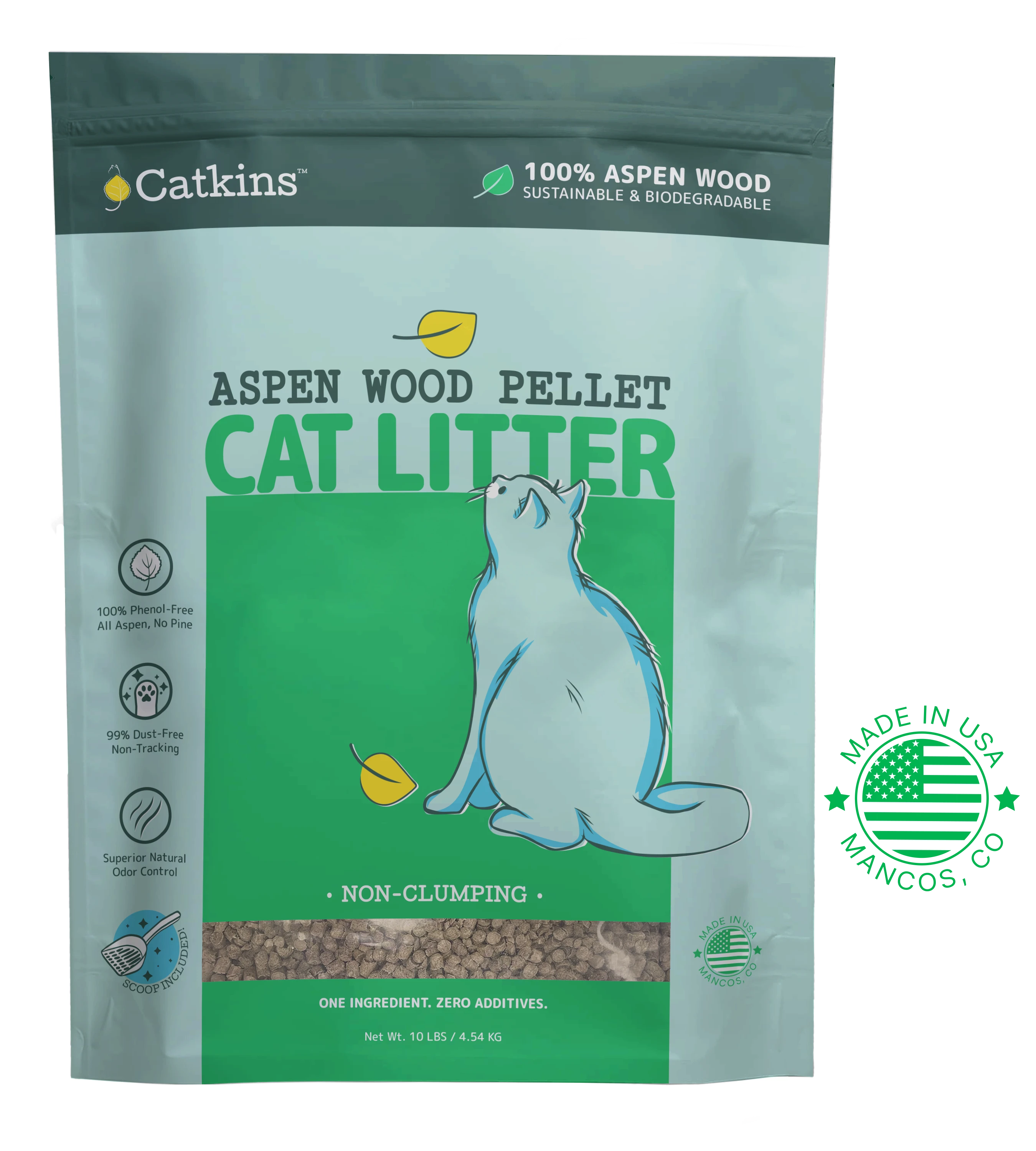100% Aspen. 0% Nonsense.
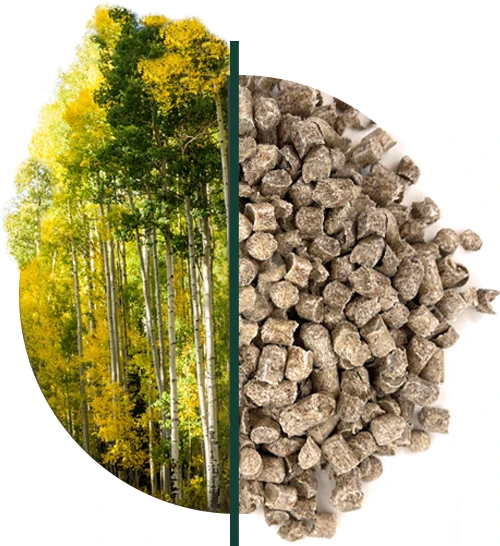
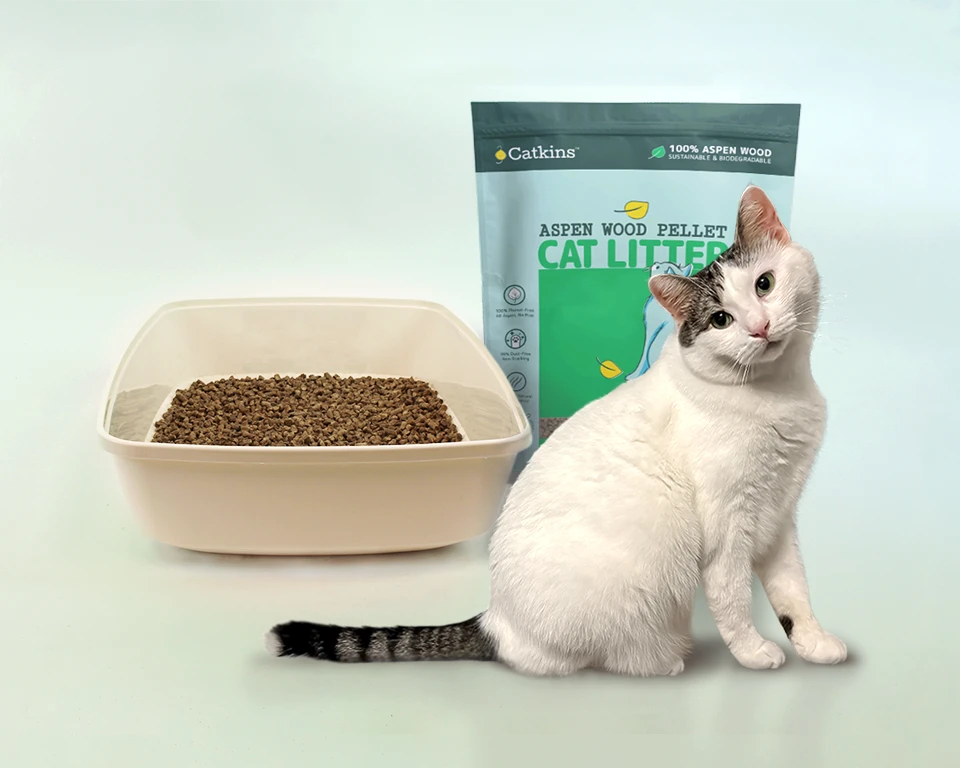
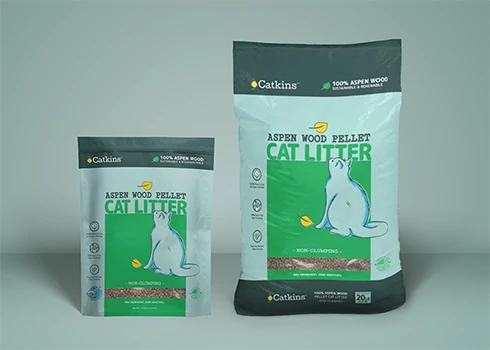
Litter-ally Launching Soon!
Join the list and be the first to know when Catkins™ Aspen Wood Pellet litter hits the shelves.
Frequently Asked Questions
Phenols found in pine resins can be harmful to small animals like cats, because they’re naturally toxic and can irritate their respiratory systems. While kiln-drying pine wood reduces some of these compounds, it does not remove all phenols. This means that long-term exposure to pine-based products, like litter or bedding, can still pose health risks, especially in enclosed spaces where the phenols can build up in the air. For small pets with sensitive lungs, this makes pine less safe compared to aspen, which naturally lack phenols and are gentler for long-term use.
Aspen pellets are superior to pine because they do not contain resins or phenols, the sticky, strong-smelling compounds found in softwoods like pine and cedar. Without these chemicals, aspen pellets don’t react with ammonia in cat urine, so they naturally absorb and neutralize odors instead of just masking them. This makes aspen a safer, gentler option that’s less likely to irritate your cat’s respiratory system or create harmful byproducts, offering a cleaner and more natural litter experience.
TL;DR: Aspen won’t “fight” with the odors chemically, it just traps them. That’s better for long-term odor control and for pet safety.
Made from 100% aspen wood, Catkins™ pellets are compostable and biodegradable. When composted properly, the pellets break down safely and return to the earth without harming the environment. To protect health and hygiene, always dispose of solid pet waste separately before composting and restricting the compost’s use to non-edible gardens. Be sure to follow your local guidelines for safe disposal of pet waste. If composting isn’t permitted in your area, simply dispose of used pellets according to your community’s waste management rules.
No, you don’t need a sifting litter box to use the pellets, any standard litter box works just fine. Plus, every 10lb bag of Catkins™ pellets comes with a pellet scoop included, specially designed to separate solid waste while leaving the intact pellets behind. It’s simple and convenient with no extra equipment needed.
Yes, Catkins™ 100% aspen pellets are safe for your cat. Unlike some other wood types (like pine or cedar), aspen contains no aromatic oils or phenols, which can be harmful to cats. Our aspen pellets are made from natural, untreated wood with no added chemicals or fragrances, making them a non-toxic, gentle, and cat-safe litter choice.
Yes, the pellets can be used for multiple cats. Aspen pellet litter is highly absorbent and helps control odors well, making it suitable for multi-cat households. Just be sure to scoop solid waste daily and refresh the litter regularly to maintain cleanliness and comfort for all your cats.
No, Catkins™ pellet litter does not clump. Unlike clumping litters, the aspen pellets break down into sawdust when they absorb liquid. This makes cleaning the litter box easier to manage, since you don’t need to scoop out urine clumps. Instead, you simply remove solid waste and gently shake the litter box to sift the crumbled pellets to the bottom. Many users find using pellets to be cleaner and more efficient, with less odor and less mess.
No, pellet litter usually does not work with automatic litter boxes. Most automatic systems are designed for fine, clumping litter, not larger pellets.
California law that requires companies to place Prop 65 warning labels on packaging for products made of wood and/or wood dust sold in California. This warning does not mean the product is unsafe to use. It’s included to comply with California regulations and to inform users of even trace exposures. Many natural wood products carry this warning out of an abundance of caution.
Clean Paws. Clean Planet.
Our sustainable harvesting process follows strict environmental guidelines that help reduce the risk of wildfires in the forests and mountain regions of western Colorado. The wood used to make Catkins™ pellets comes entirely from the sawdust created during the processing of these sustainably harvested trees. No new aspen trees are cut down solely for pellet production.
Aspen Catkins
In early spring, aspen trees begin to awaken with the appearance of catkins. These soft, drooping clusters of small yellow flowers emerge before the leaves and are an important part of the aspen tree’s reproductive cycle. Catkins signal the return of life and growth throughout the forest.
